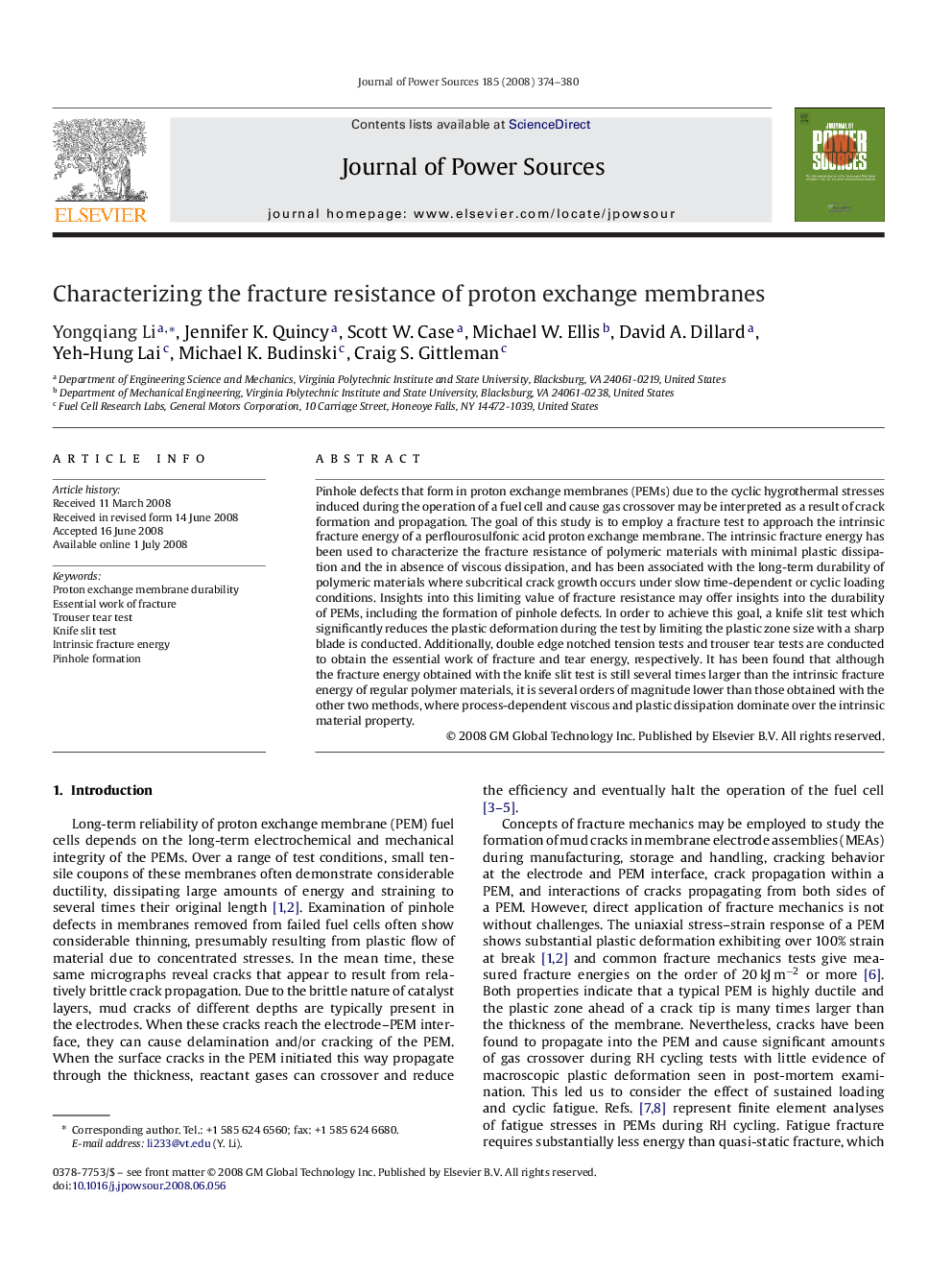| Article ID | Journal | Published Year | Pages | File Type |
|---|---|---|---|---|
| 1294423 | Journal of Power Sources | 2008 | 7 Pages |
Pinhole defects that form in proton exchange membranes (PEMs) due to the cyclic hygrothermal stresses induced during the operation of a fuel cell and cause gas crossover may be interpreted as a result of crack formation and propagation. The goal of this study is to employ a fracture test to approach the intrinsic fracture energy of a perflourosulfonic acid proton exchange membrane. The intrinsic fracture energy has been used to characterize the fracture resistance of polymeric materials with minimal plastic dissipation and the in absence of viscous dissipation, and has been associated with the long-term durability of polymeric materials where subcritical crack growth occurs under slow time-dependent or cyclic loading conditions. Insights into this limiting value of fracture resistance may offer insights into the durability of PEMs, including the formation of pinhole defects. In order to achieve this goal, a knife slit test which significantly reduces the plastic deformation during the test by limiting the plastic zone size with a sharp blade is conducted. Additionally, double edge notched tension tests and trouser tear tests are conducted to obtain the essential work of fracture and tear energy, respectively. It has been found that although the fracture energy obtained with the knife slit test is still several times larger than the intrinsic fracture energy of regular polymer materials, it is several orders of magnitude lower than those obtained with the other two methods, where process-dependent viscous and plastic dissipation dominate over the intrinsic material property.
